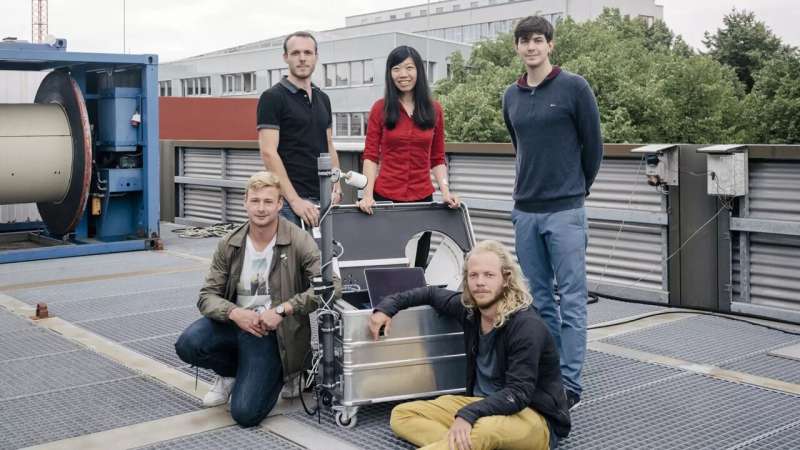This article has been reviewed according to Science X's editorial process and policies. Editors have highlighted the following attributes while ensuring the content's credibility:
fact-checked
peer-reviewed publication
trusted source
proofread
Previously unknown methane sources identified in Hamburg

After carbon dioxide, methane is the second most common greenhouse gas caused by human activity. Moreover, over a 20-year period, its global warming potential is more than 80 times that of carbon dioxide. The largest known sources are wetland, agriculture and waste, and fossil fuel production and use. Methane has a much shorter atmospheric lifetime than CO2 (around 12 years compared with centuries for CO2). Consequently, the reduction of methane emissions has considerable potential for limiting global warming in the short to medium term.
Methane emissions in cities
A substantial portion of global methane emissions occurs in cities. There are many locations where methane is released—intentionally or accidentally. The research team at the Technical University of Munich (TUM) selected Hamburg as a location to track down methane leaks and other unknown sources. Hamburg is not only Germany's second-largest city by population. It is also a port and an industrial center. With its various methane sources, it offers ideal conditions for the project. The study is published in the journal Atmospheric Chemistry and Physics.
Numerous methane sources discovered in Hamburg
Through the project, the team succeeded in identifying numerous previously undetected methane sources in Hamburg. Along with natural sources such as the Elbe River, the largest share of emissions is caused by human activity. Around half of these emissions come from leaking gas pipelines, incomplete combustion, and other industrial and fugitive emissions. The mobile measurements also made it possible for the researchers to detect unknown methane sources. They discovered that about 2% of human-caused methane emissions in Hamburg originated from leaking pipes at one oil refinery and a nearby cattle farm, which are highly underestimated in the state-of-the-art emission inventory.
Updating existing emission data
The researchers began with an emission map from the Dutch research institute TNO. It provides a spatial representation of greenhouse gas emissions in Hamburg, based on national reported emissions that have been spatially distributed using proxy data (population density map, etc.). To check and update the values shown on the map, the team selected two approaches:
"First, we conducted mobile measurements using a car equipped with sensors. We drove it through areas, where we expected to detect methane emissions, to gain a better understanding of the spatial distribution. Second, we used our sensor network to measure the overall emissions in the city. The network is made up of four measurement devices, which we used in previous studies to measure emissions in Munich," says Jia Chen, Professor of Environmental Sensing and Modeling at TUM.
"Our sensor network uses the sun as a light source. Because every molecule in the atmosphere absorbs only specific frequencies of the sunlight, we can determine the concentrations of the various greenhouse gases in the column of air between our measurement device and the sun."
Measurements in and around Hamburg
To find out the quantities of greenhouse gases being emitted within Hamburg, the researchers positioned one measurement device in the city center, with the others placed in the eastern, southern and western outskirts.
"That meant that one sensor is always upwind from the city, with another one positioned downwind. If the second measurement value is higher than the first, we can use atmospheric transport models to quantify the greenhouse gases being released in the city. For this purpose, we measure wind speed, wind direction and turbulence with an optical wind LiDAR," says Andreas Forstmaier, first author of the study and researcher at the Professorship of Environmental Sensing and Modeling.
Future use of measurement technology
The method designed for cities will be expanded in the future to perform global measurements using satellites. With this work, the researchers aim to make a decisive contribution to understanding climate change and slowing down its progress.
More information: Andreas Forstmaier et al, Quantification of methane emissions in Hamburg using a network of FTIR spectrometers and an inverse modeling approach, Atmospheric Chemistry and Physics (2023). DOI: 10.5194/acp-23-6897-2023
Journal information: Atmospheric Chemistry and Physics
Provided by Technical University Munich





















